Most people – if they’ve heard of it at all – are aware of ‘blue lava’ thanks to the otherworldly photographs of French photographer Olivier Grunewald. The images, which Grunewald captured at the Kawah Ijen volcano on the island of Java in Indonesia, seem to show rivers of electric-blue lava, incandescent against a black velvet night.
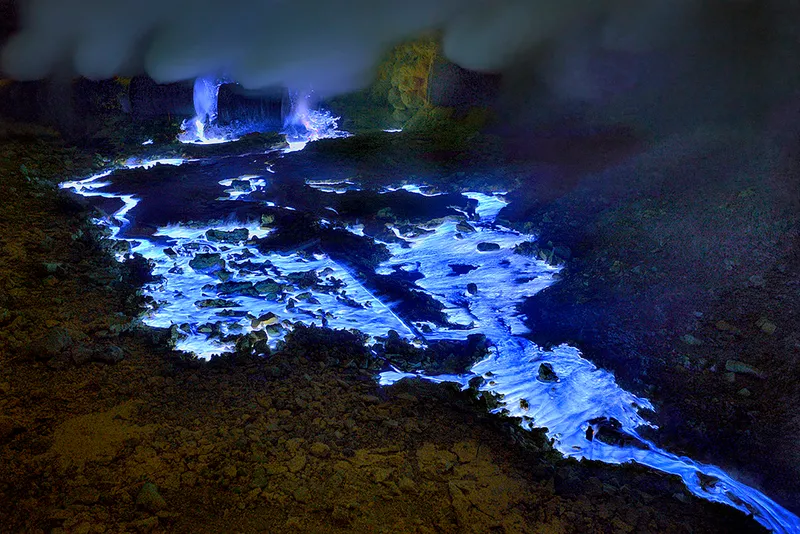
Despite appearances, however, it’s not lava that produces the striking blue glow. Instead, it’s combusting sulphuric gases, which belch from the volcano’s many fumaroles at temperatures of up to 600°C (around 1,100°F).
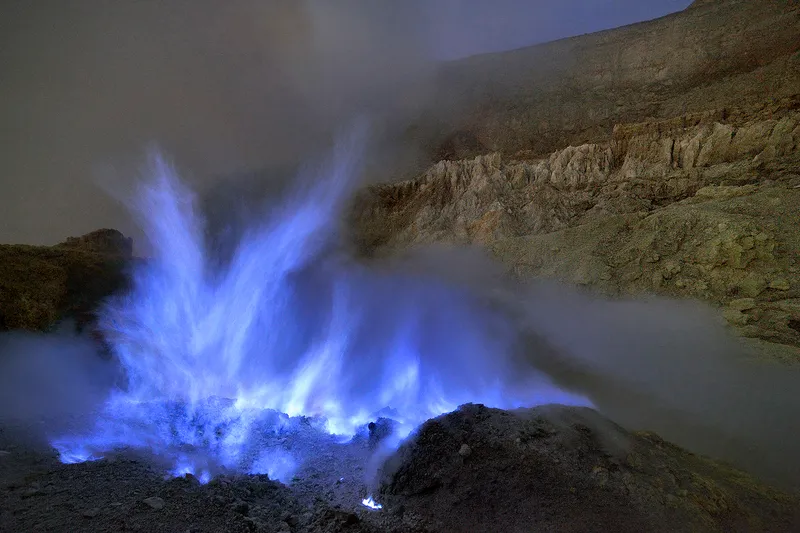
When the hot gases hit oxygen-rich air, they ignite and burn with a neon-blue flame. As they burn, some of the gases condense into molten sulphur, which continues to burn blue as it spills down the mountainside. By contrast, Kawah Ijen’s actual lava emerges in the familiar red-orange colour you see at other volcanoes.
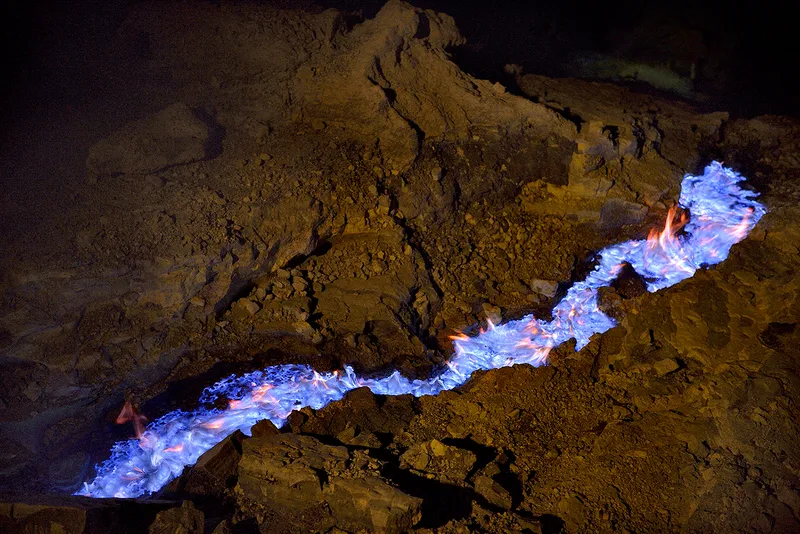
The flames’ distinctive blue colour is caused by a phenomenon called electronic excitation. When the sulphuric gases burn, the intense heat ‘excites’ electrons within the sulphur atoms. This excited state is extremely unstable and the electrons revert almost immediately to their ‘relaxed’ state by shedding excess energy in the form of light.
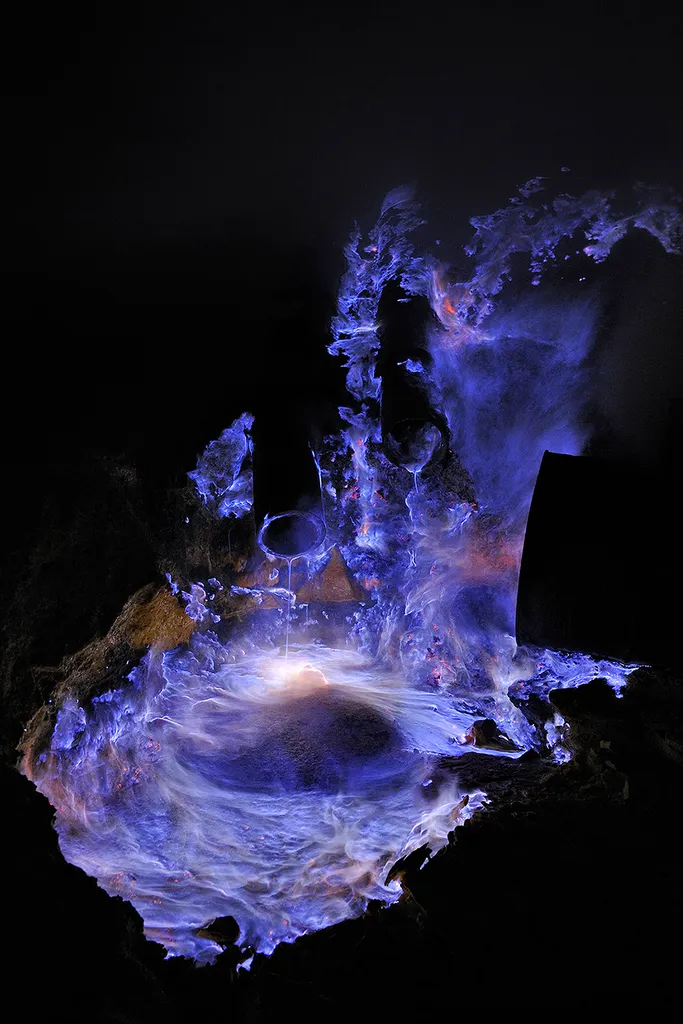
All elements emit characteristic wavelengths of light during electronic excitation, corresponding to different colours of the visible spectrum. In the case of sulphur, that colour is the eerie blue-violet that tints the flames at Kawah Ijen.
Locals refer to the phenomenon as Api Biru, or ‘blue fire’. Although the blue fire burns around the clock, its flames are difficult to make out in daylight; only as night falls does the spectacle begin to reveal itself.
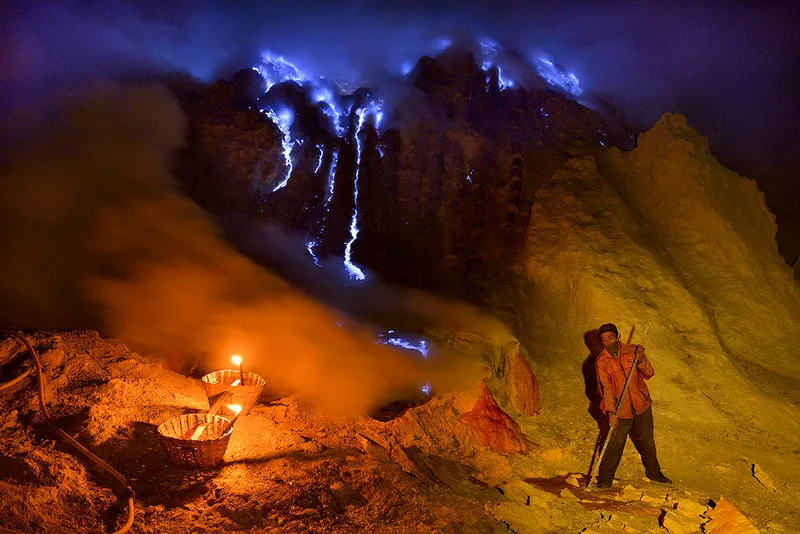
Api Biru is not unique to Kawah Ijen – Grunewald has also photographed the phenomenon at the Dallol volcano in the Danakil Depression in Ethiopia. But the Kawah Ijen’s unusually high concentrations of sulphur deposits and sulphuric gases make it the most arresting example and the only one that is consistently burning.
Read more:
- How to stop a volcano
- 5 interesting facts about volcanoes to shake up what you know about them
- How to survive inside one of Earth’s deadliest volcanoes
- The thought experiment: What would happen if the supervolcano under Yellowstone erupted?
Asked by: Myles Dixon, via email
To submit your questions email us at questions@sciencefocus.com (don't forget to include your name and location)








